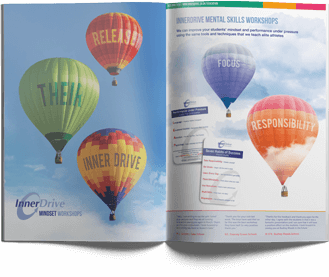Group work can be thought of as the ultimate double-edged sword. Done well, it can help develop personal skills and accelerate learning. Done badly, and it can be frustrating and even a hindrance to learning.
Even at the best of times, it presents challenges. There can be group conflicts, lazy group members who do little work (or none at all), lots of time spent gossiping rather than working, and some group members may learn little from it if they cannot keep up with others in their group.
In an era of distance learning online, group work can be even more difficult. Researcher Vikki Katz and her colleagues surveyed over 3,000 students doing online learning during the Covid-19 pandemic, and found that students were unhappy doing big group projects and found them very frustrating.
However, group work still has important benefits. It develops students’ communication and teamwork skills, builds their confidence, and enhances not only their academic learning but their social and emotional learning too. It could be an important way to keep students engaged in their learning from a distance.
So, how can you set up and guide effective group work during distance learning?
Establish the ‘How’
First thing is to establish exactly how you are going to conduct the group work. Which platforms are you going to use? How should groups communicate with each other? And how should they share their work?
Online group work will require technology to a certain extent, and not every student or teacher will have experience with the various platforms. It’s best if teachers can decide exactly how the project is going to run, and then teach students how to use the platforms and tools they’re going to need ahead of the task. For example, briefly instructing them on how to use Teams or Zoom, how to communicate with you or each other, and then making sure they know how to set up and use Google Docs.
This makes the whole process more organised, and ensures students are set up with the right kind of programmes to make their group project work. We wouldn’t want to leave them trying to coordinate their group project via Snapchat, for example, or waste half their given time trying to download the right software. This also allows you to make sure all students have access to the same tools and if not, gives you time to figure out a solution.
Be specific with the ‘What’
As well as ensuring students know ‘how’ to do their group work, it’s important to make sure they know exactly ‘what’ they should be aiming to do as well. This doesn’t mean doing everything for them, but rather setting them up to be able to do their group work efficiently and effectively.
So, be specific. Assignments with vague instructions won’t be the best for online learning. Students often find this approach infuriating, and all the decisions they need to make can get in the way of actual work and learning. While allowing students more independence and flexibility can help them to be more creative, proactive, and develop group decision making skills, it’s unlikely to be the most productive way of doing things through a virtual barrier.
So, to encourage successful group work projects, be as specific as possible in the assignment brief. This could include having a set desired outcome at the end of the project, giving students some suggested resources to use, or having a clear timeline for when groups need to have completed each stage of the work, with progress checkpoints along the way.
Assign the ‘Who’
Although part of the point of group work is that it encourages students to take more responsibility and work independently from the teacher, you are still the leader. Under usual circumstances, group work teaching requires a happy middle between being laid back and being a ‘helicopter’ teacher. But with online group work, it will be most productive to err on the side of caution.
So, take the lead and make some of the important decisions for student groups, including assigning the roles and work distribution within the group. This avoids students wasting precious time procrastinating over decisions and not knowing how to start, and means they can hit the ground running when they get the assignment.
It also reduces the likelihood of unequal workload throughout the group, since each student will have their own individual responsibility. As part of this approach, be sure to check in with each individual member of the group several times throughout the project. This allows you to check how it is going, make sure everyone is contributing, and find out if a group member is not pulling their weight, who you can gently ‘nudge’.
On a side note, it might be best to stick to smaller group numbers when doing online projects, since group communication is trickier online. Research suggests that under typical circumstances, 4-5 is the ideal number of group members - online group projects definitely shouldn’t have any more members than this.
Give them a ‘Why’
Finally, students need to be motivated in their online group work. It may be hard for students to motivate themselves when studying from home, but perhaps even harder in group work, especially if they think they can sit back and let other group members do the work for them. A good way of motivating students in a group project is to make the project relevant to the real world. Research suggests that working on real life, meaningful projects, leads to more positive learning outcomes for students. This also helps students to develop their sense of purpose.
FINAL THOUGHTS
Group work has some important advantages. So, although there may be some hurdles to jump over with online group work, it should not be forgotten. Teachers just need to establish and specify the How, What, Who, and Why. As research suggests, group work can have several positive learning outcomes such as memory recall and understanding, but only if there is a certain level of clarity such as having clear goals set and specific roles assigned.
For more on helping students with distance learning, take a look at our lockdown resource packs.







